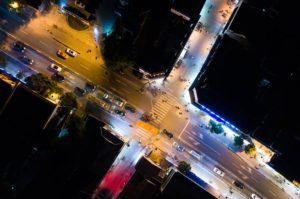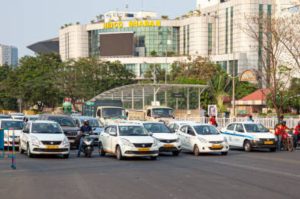Kolkata Vehicle Boom Raises Alarm: In a trend that has raised both eyebrows and environmental red flags, Kolkata is witnessing an unprecedented spike in vehicle registrations. In just the first six months of 2025, the city has already added over 1.4 lakh new vehicles to its roads—a number that not only breaks previous records but also raises serious concerns about traffic congestion, air quality, and sustainable urban planning.
The issue is no longer just about convenience and personal mobility. The continuous expansion of Kolkata’s vehicle population—without corresponding upgrades in road infrastructure or green policy—has begun to choke the very arteries that keep the city functioning.

Unprecedented Vehicle Growth
According to data released by the Public Vehicles Department (PVD) and corroborated by the West Bengal Transport Department, the first half of 2025 saw 1.42 lakh new vehicles registered in Kolkata. That’s an average of over 780 new vehicles every day, with a clear tilt toward two-wheelers and private cars.
This is the highest first-half-year spike in over a decade, even surpassing the pandemic rebound years of 2022–2023.
Breakdown by Category (January–June 2025):
- Two-wheelers: 65,000+
- Private cars: 45,000+
- Commercial vehicles: 12,000+
- Electric vehicles (EVs): 8,700+
- Others (autos, e-rickshaws, etc.): 11,300+


Kolkata Vehicle Boom Raises Alarm: What’s Fueling the Surge?
Experts point to several key drivers behind the spike:
1. Affordable Financing
Post-pandemic bank policies and aggressive offers by automobile dealers have made owning a vehicle more accessible. Interest rates as low as 7.5% for auto loans, longer repayment periods, and 0-down payment schemes are luring first-time buyers.
2. Work-from-Home Shift Ending
With many professionals returning to physical offices, especially in Sector V and New Town, the need for personal transport has returned.
3. Public Transport Struggles
Though services have resumed, many commuters cite delays, overcrowding, and last-mile issues as reasons for shifting to personal vehicles.
4. Peer Influence and Urban Aspiration
Car and bike ownership remains a major aspirational symbol in India. In Kolkata, the emergence of newer, smaller car models under ₹6 lakh has brought four-wheelers within reach of more families.
Environmental Fallout: Green Alarm Bells Ringing
Environmentalists, urban planners, and even some within the state administration are worried.
Key Environmental Impacts:
- Air pollution: Vehicular emissions already account for over 40% of Kolkata’s PM2.5 pollution load, per WBPCB reports.
- Noise pollution: Increased honking and engine noise in densely populated areas.
- Traffic bottlenecks: Key junctions such as EM Bypass, Park Street, Dunlop Crossing, and Shyambazar Five-Point face gridlocks during peak hours.
- Green cover pressure: More parking lots, fewer trees. Open spaces are shrinking in favor of vehicle accommodation.
“Kolkata’s carbon footprint is ballooning,” says Dr. Neelam Roy, an environmental scientist with Jadavpur University. “We are seeing a 12–15% annual increase in vehicular greenhouse gas emissions.”
Infrastructure: Playing Catch-Up
Despite various flyover projects, smart traffic lights, and expressway expansions, the road infrastructure is not expanding at the pace required to handle such a spike.
The city currently has only 1.2 km of road per 1,000 people, compared to 3–5 km in other metros like Delhi and Bengaluru.
What’s Missing?
- Dedicated cycling lanes: Absent in most parts of the city.
- Pedestrian zones: Encroached or under-maintained.
- Smart parking solutions: Severely underdeveloped; illegal parking still rampant.
Traffic Management Challenges
The Kolkata Traffic Police is grappling with this surge.
Officer feedback:
- Traffic sergeants report 20% longer average clearance time at busy intersections.
- Rise in accidents involving two-wheelers, particularly delivery agents and app-based riders.
- Difficulty in enforcing lane discipline due to sheer volume.
“Our personnel are overworked and outnumbered,” a senior officer at the Lalbazar Traffic Headquarters confessed on condition of anonymity.
The Electric Vehicle (EV) Paradox
Though EV adoption is slowly rising, it still constitutes less than 6% of new registrations. The state government had aimed for 25% by 2025 under its Green Mobility Mission.
Challenges:
- Charging infrastructure: Only 120 public charging points operational across the city.
- Higher upfront cost: Despite subsidies, EVs remain pricier than their fossil-fueled counterparts.
- Lack of awareness: Many buyers are unsure about maintenance, battery life, and resale value.
Policy Vacuum and Urban Governance Gaps
Urban planners argue that Kolkata lacks a unified urban mobility policy. Projects are often implemented in silos, with little coordination between PVD, KMC, and the state transport department.
Missed Opportunities:
- No effective congestion tax or odd-even traffic schemes.
- Delay in Metro expansions to under-served areas like Tollygunge, Barasat, and Behala.
- Lack of green fleet incentives for app-based transport companies.
What Needs to Be Done? Solutions and Way Forward
Experts suggest a multi-pronged approach:
1. Strengthen Public Transport
- More buses on key routes.
- Faster Metro expansions.
- Last-mile solutions using e-rickshaws and app-based pooling.
2. Regulate Private Vehicle Use
- Introduce congestion pricing zones.
- Mandatory carpooling rules for office hubs.
- Designated no-car zones in central Kolkata.
3. Expand Green Infrastructure
- Vertical parking complexes to free up roads.
- Create green corridors with EV-only access.
- Tree plantation along arterial roads.
4. Promote EV Use
- Increase subsidies and promote domestic EV manufacturing.
- Public-private partnerships for charging stations.
- EV-only lanes and incentives for green taxis.
Voices from the Street
Anwesha Dey, college student:
“I used to take the bus to college, but post-pandemic delays are unbearable. I had to buy a two-wheeler.”
Ramesh Tiwari, Uber driver:
“Parking is a nightmare. On EM Bypass, we waste 30–40 minutes daily due to traffic jams.”
Sougata Banerjee, auto showroom manager:
“This is our best quarter in years. Small cars are flying off the lots.”
External Government Links
- West Bengal Transport Department
- Kolkata Traffic Police
- West Bengal Pollution Control Board
- Ministry of Road Transport and Highways
Infographic Highlights (Optional Visualization)
- Daily new vehicle registrations: 780+
- EV share in 2025: 6%
- Public charging stations: 120
- PM2.5 vehicle contribution: 40%
- Kolkata road length per capita: 1.2 km per 1,000 people
Conclusion
Kolkata’s booming vehicle numbers are a symptom of deeper urban challenges—broken public transit, infrastructure delays, and weak policy implementation. While the car and bike surge may symbolize economic growth and aspiration, unchecked it threatens to make the city unlivable.
What remains to be seen is whether the authorities act in time to steer this mobility explosion toward a greener, more sustainable future—before the wheels come off.
Also read: Home | Channel 6 Network – Latest News, Breaking Updates: Politics, Business, Tech & More

